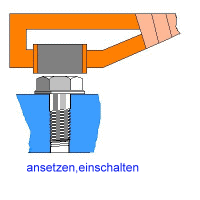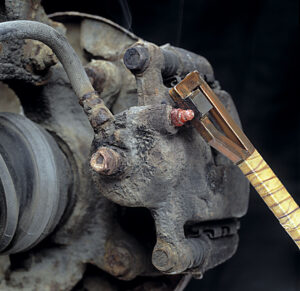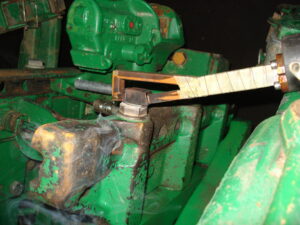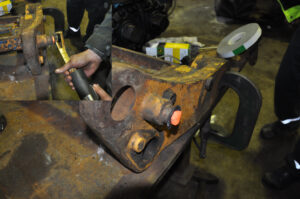Car/body shop
In many cases, nuts can be heated with a burner flame if necessary, so that they expand and loosen. At least if there isn’t a brake or fuel line nearby or the underbody protection is in danger of catching fire.
Of course, you can also do this with the deep induction device. However, it is faster and more targeted.


But what if, as in most cases, only the HEAD of the screw is accessible? With the torch, the most you can do is desperately try to heat the material in which the threaded hole is located. This is NOT A GOOD IDEA!
With deep induction, you have a completely different option. You heat into the head! As soon as it starts to glow, you ‘push’ more heat into it, just enough to keep the head glowing. You do this until the heat has reached the depth where it is stuck in a thread or sleeve due to rust or deposits.

In any case, the targeted heat within the screw spreads much faster than the heat transfer allows the heat to flow from the screw into the surrounding material. The effect: The screw expands much more than the rest. As there is almost no room for this in the thread, this movement simply crushes any rust and deposits in the thread.
As a result, the screw is of course even more jammed than before. Therefore: Let it cool down! Now you have the same screw as before – minus the rust. Characteristic screeching when opening, the rust is found as fine dust, but the screw now opens! No tearing off, no turning of the head.
To start with, it is best to try this with a bleed nipple from the brake system, as it sits in the brake calliper and notoriously breaks off! In this case, ‘hold on’ for about 5 seconds. The nipple glows, the surrounding material is not affected. Allow to cool down – THE NIPPLE WILL BE UNDAMAGED.

Next: The first, short screws (thread length 10-15mm). The same applies here: Heat from the head. Always keep the inductor moving slightly. In addition, only ever press the trigger briefly – keep the head evenly in the dark red glow. Again, do this until heat (not embers) has penetrated into the sticking areas. Allow to cool and open!
Works regardless of the head shape, also works from the other side if only a piece of thread is sticking out.



Please remember these two tips in any case:
- Parts that have been annealed for a longer period of time, e.g. screws, should be replaced afterwards!
- Never anneal hardened/tempered parts that are not being replaced, as there is a risk of loss of strength or embrittlement! However, it may be possible to do something with a sudden 250°C in the right component. To do this, simply move the inductor faster.
And this is how it works:
Heat to expand the nut is a good approach! However, the heat should come ‘from the inside’ so that the surface of the nut and especially neighboring parts remain as cold as possible. In this case, a small, mobile device the size of a welder is used to generate induction in the tip of a hand tool, which is connected to the device via a hose package.
Some current now flows through this tool, acting like the primary coil of a transformer. Incidentally, it does not heat up significantly!

The induction generated could be used to generate voltage on a coil that is held near the tip of the tool. In this case, the nut to be loosened is our ‘coil’ – and immediately short-circuits all the voltage generated. You can imagine what happens next: A lot of current flows and heat is generated. Inside the nut, exactly where we need it. The nut can be easily opened with a key.
The good news: as long as you don’t replace any parts and there is no structural damage to the bodywork, you can leave it at the normal toe-in setting. And here comes the problem: in 95% of cases, the tie rod end breaks when you try to adjust it. With the induction heater and grip pliers, there is a procedure that gives the tie rod end a 100% chance of survival.
